Morphometric traits generally showed medium heritabilities and positive genetic correlations with growth traits
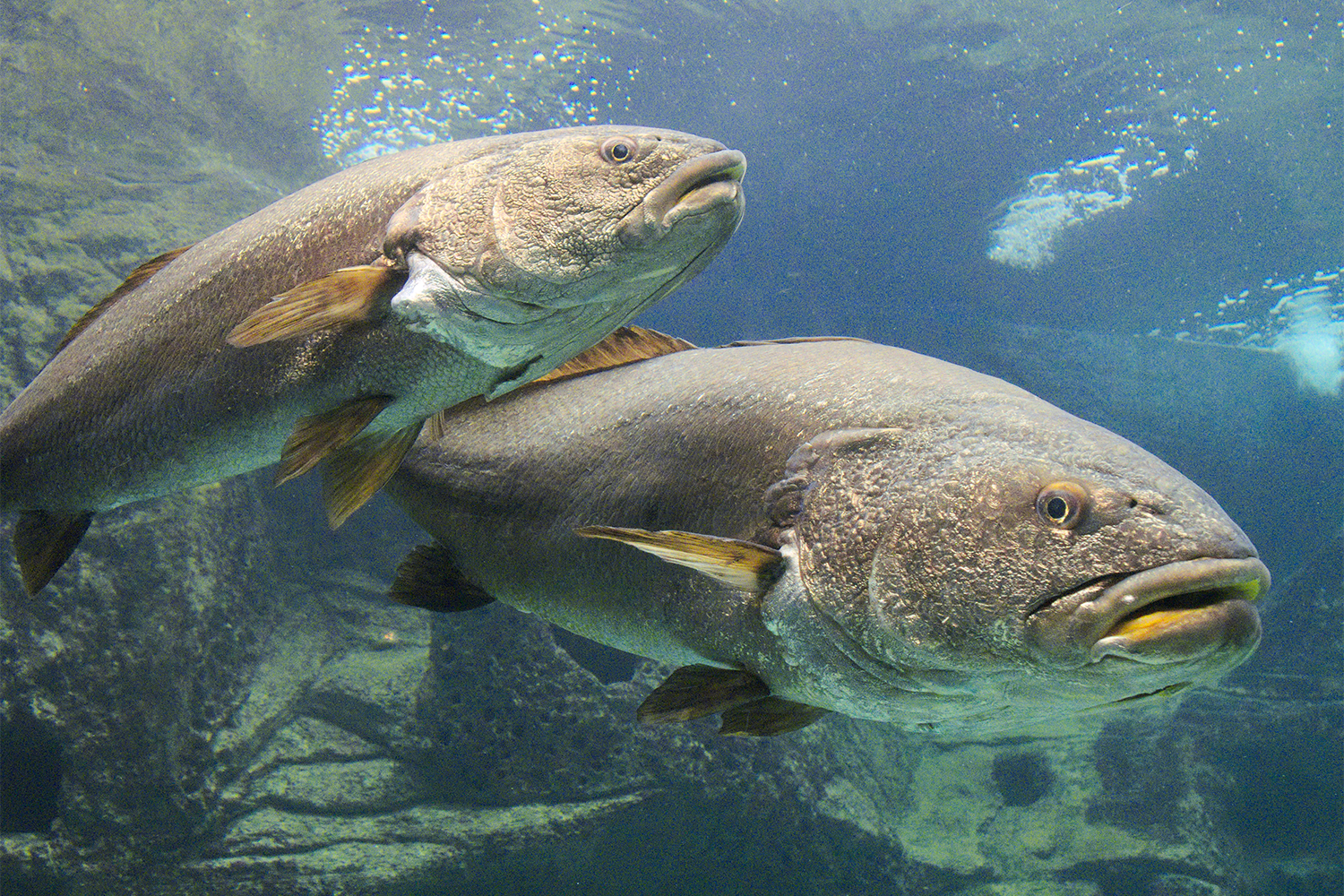
In recent years, demand has been growing for the inclusion of new aquaculture species to increase the diversity of species and the sustainability of the Mediterranean aquaculture sector and to expand the market for aquaculture products.
Meagre (Argyrosomus regius) has become a species of great interest. It is a fast-growing carnivorous fish (family Sciaenidae, along with drums and croakers) with valued market quality. It is one of the new species being developed in Mediterranean aquaculture to diversify the sector; the main producing countries in the Mediterranean area are Egypt, Turkey, Spain and Greece, which accounted for 64.9, 14.2, 10.6 and 6.5 percent of the total production in 2021, respectively.
Meagre is still at an early stage in selective breeding programs. Little progress has been made, as the species has only recently been included in selection programs that primarily focus on growth performance. These strategies are already more consolidated in species such as salmon or gilthead sea bream, where genetic improvement programs are more advanced. To the best of our knowledge, no work has been carried out yet on the genetic components related to other characteristics different from growth traits, which indicates a significant gap in the understanding of the genetic basis of the external morphology and yield traits in meagre.
This article – summarized from the original publication (Vallecillos, A. et al. 2023. Potential Use of Image Analysis in Breeding Programs for Growth and Yield Traits in Meagre (Argyrosomus regius). J. Mar. Sci. Eng. 2023, 11(11), 2067) – reports on research to estimate the phenotypic and genetic variability for carcass and fillet yield and assesses the use of image analysis as a useful tool to assess morphological traits in meagre.
Study setup
This study assessed 10 new productive traits in meagre (Argyrosomus regius), including three related to the carcass and seven related to morphometric characteristics. The fish used in this study were obtained from one broodstock group (n = 9; 4 males and 5 females) from the company Alevines del Sureste S.L. (Cabo Cope, Águilas, Murcia, Spain) of the Avramar group. All broodstock were synchronized for egg release and embryo collection on four consecutive days (4DL model) to maximize family representation.
Offspring fish were randomly separated and raised in two different systems (HS): 244 fish were raised in sea cages in Burriana (Castellón, southeast of Spain) and 368 fish in continental tanks in Águilas (Murcia, southeast of Spain), under different rearing conditions. After 549 days post-hatching and subsequent rearing in tanks and cages, 612 fish were harvested, sacrificed and used for various image measurements.
We used the non-invasive technology (NiT) called IMAFISH_ML software. Each fish underwent digital photography for morphometric measurements, manual weighing and manual evisceration before being filleted to calculate the carcass and fillet yield. Subsequently, the principal genetic parameters were estimated.
For detailed information on the study design, fish husbandry, data collection and analyses, refer to the original publication.
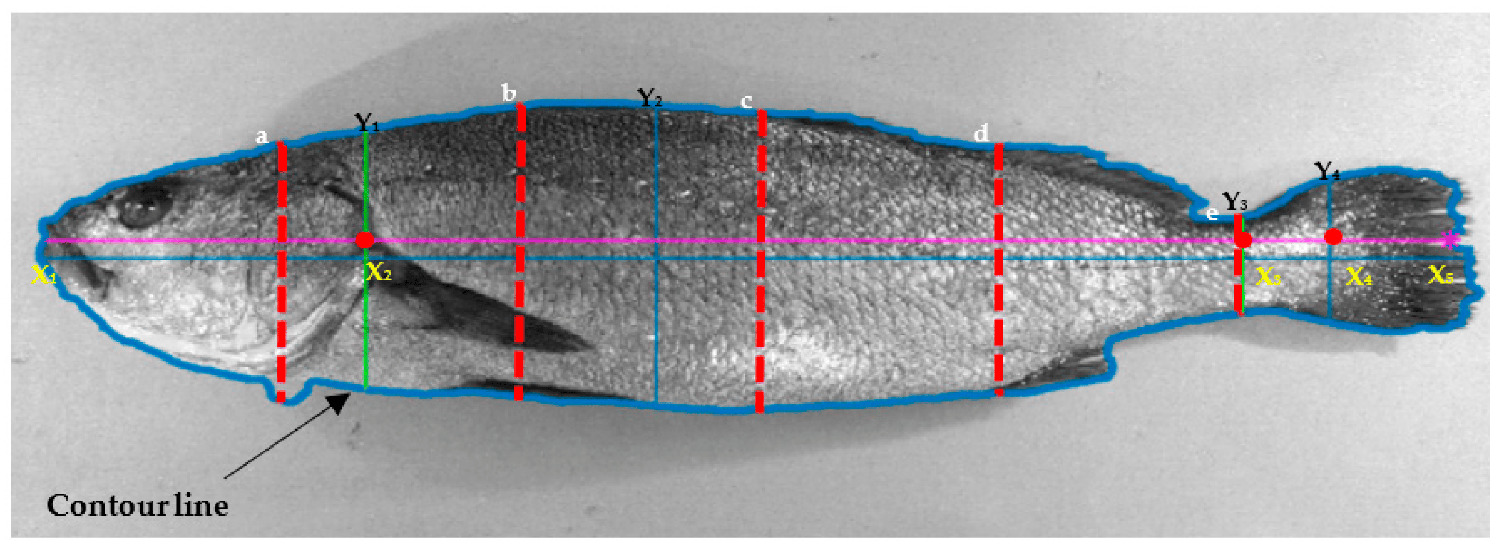
Results and discussion
We explored the effect of two different rearing conditions (tanks and cages) on carcass quality traits in meagre. We only found significant differences for the body weight and carcass yield. The fish raised in cages exhibited a 1.46-fold higher weight compared to their tank-reared counterparts. Fish in the cages were 37.9 percent heavier than those in the tanks when the difference is calculated as a percentage of the average of both rearing systems. This result is likely attributable to the higher population density in the tank, as has been observed in other related research studies.
There were no differences between the rearing systems for other traits when adjusted by body weight (BW). The BW had a meaningful effect on the morphometric traits related to fish length, height and especially to the area. Thus, for every 100 grams of weight increase, the total length (TL) increased by 1.39 cm, and for specific morphometric measurements, it increased by 19.3 and 12.4 square cm, respectively. No significant rearing system effect was observed for fillet yield (Fig. 2). However, the carcass yield for the tank fish was around 2 percent higher than for the cage fish.
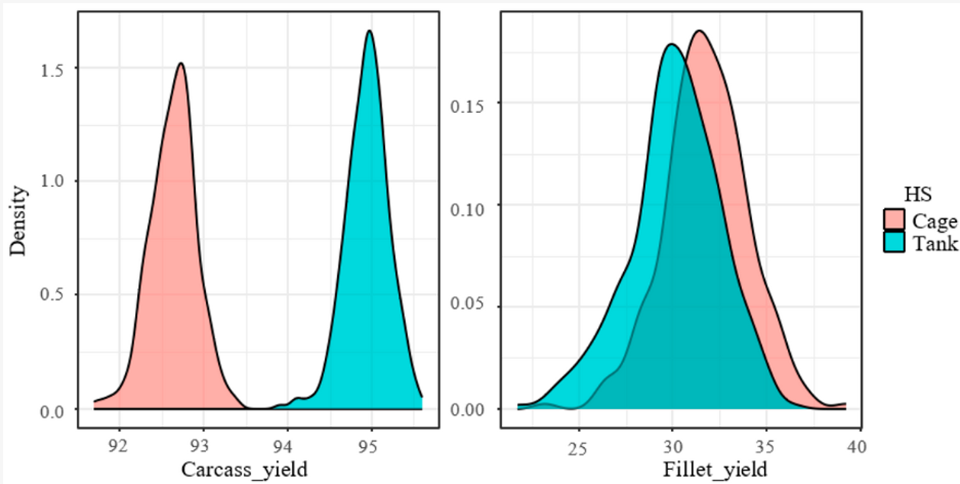
Overall, fish reared in tanks exhibited a higher carcass yield than those in cages, which was potentially linked to improved access to feed, limited movements, or a lower stress level in the tank environment.
The importance of measuring easily quantifiable traits, such as body weight and length, lies in their role in assessing fish performance and guiding breeding decisions. The genetic parameters for the growth traits (BW and TL) showed a medium heritability with a high phenotypic and genetic correlation between them, in accordance with studies by other researchers.
Researchers have explored indirect and genomic selection methods to tackle the complexities of improving carcass yield and fillet yield, particularly in species such as rainbow trout. However, the fillet yield is not clearly associated with the BW or length, and direct selection remains the preferred approach for its improvement in various fish species. Notably, advancements in technology, including computer vision and machine learning, offer the potential for the non-invasive and automated measurement of morphometric traits, saving time and minimizing measurement errors, which is essential for large-scale breeding programs.
This approach empowers fish breeders to make more informed decisions about selecting future fish to breed without relying solely on offspring characteristics. In our study, the IMAFISH_ML software automatically generated a total of 6,120 morphometric measurements in just a few hours, covering 10 different technological traits from 612 fish. In general, the morphometric traits showed medium heritabilities and positive genetic correlations with the growth traits, although these correlations were not estimated accurately.
The genetic correlations of some morphometric measurements with the fillet yield were particularly interesting and indicate the potential for using the easily recorded the height trait FMH as a selection criterion to improve the fillet yield of meagre. Similar results were found by other researchers in common carp and in gilthead sea bream, with a high heritability and genetic correlation for growth and morphometric traits.
Image analysis can save time and be an accurate tool to be included in a breeding program for growth improvement. However, because of the limited amount of data available, extensive analysis with more data should be considered for yield traits in order to obtain more accurate estimates for meagre breeding programs.
Perspectives
Results of this research show that non-invasive technological traits from IMAFISH_ML image analysis are a potential tool in meagre breeding programs, defining promising candidates for genetic selection since these traits showed medium-high heritabilities and strong genetic correlations with growth traits. Indirect selection for fillet yield could also be carried out through these non-invasive measurements, especially for fillet maximum height. However, further studies should be carried out to obtain more accurate estimates, especially when focusing on indirect selection.
Now that you've reached the end of the article ...
… please consider supporting GSA’s mission to advance responsible seafood practices through education, advocacy and third-party assurances. The Advocate aims to document the evolution of responsible seafood practices and share the expansive knowledge of our vast network of contributors.
By becoming a Global Seafood Alliance member, you’re ensuring that all of the pre-competitive work we do through member benefits, resources and events can continue. Individual membership costs just $50 a year.
Not a GSA member? Join us.
Author
-
Eva Armero, Ph.D.
Corresponding author
Department of Agronomic Engineering, Technical University of Cartagena, Paseo Alfonso XIII 48, 30202 Cartagena, Spain[115,101,46,116,99,112,117,64,111,114,101,109,114,97,46,97,118,101]
Tagged With
Related Posts
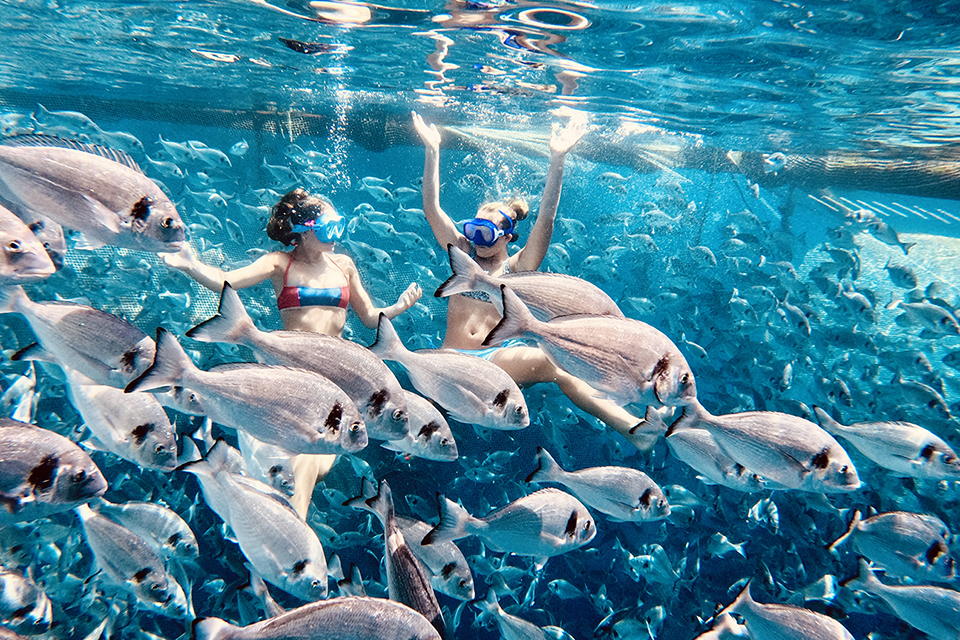
Intelligence
Aquaculture tourism: An unexpected synergy for the blue economy
Greece is embracing aquaculture tourism initiatives, leveraging sustainability and immersive experiences to enhance a thriving blue economy.
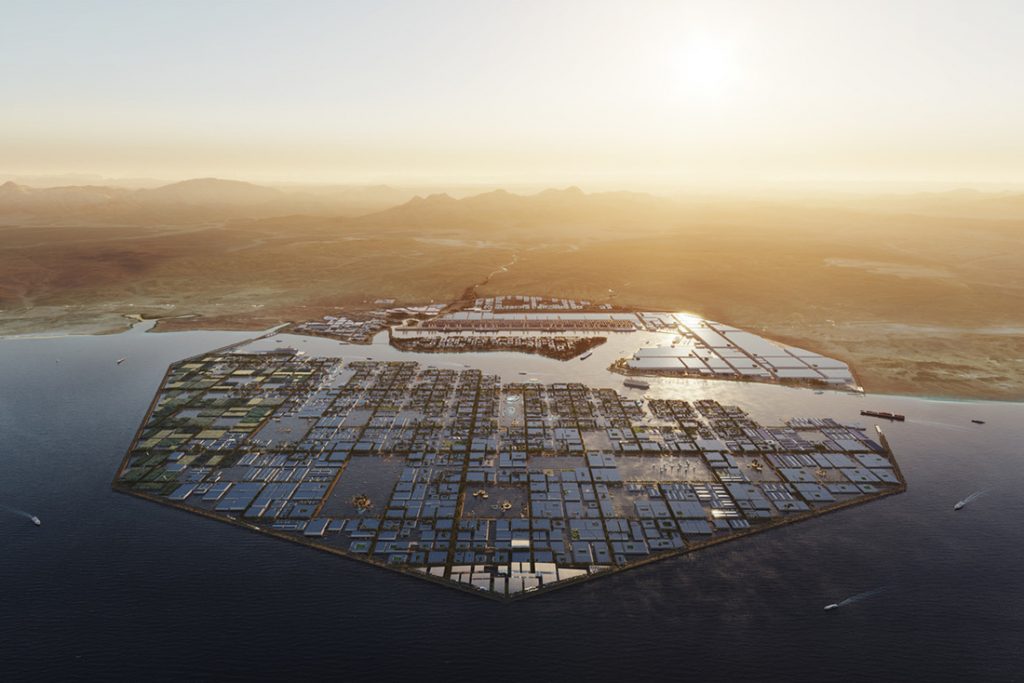
Intelligence
Neom plans to be the green city on the Red Sea with a blue foods focus
As befits a futuristic eco-city, there are very bold, very green plans for Neom, Saudi Arabia’s mega-territory being built alongside the Red Sea.
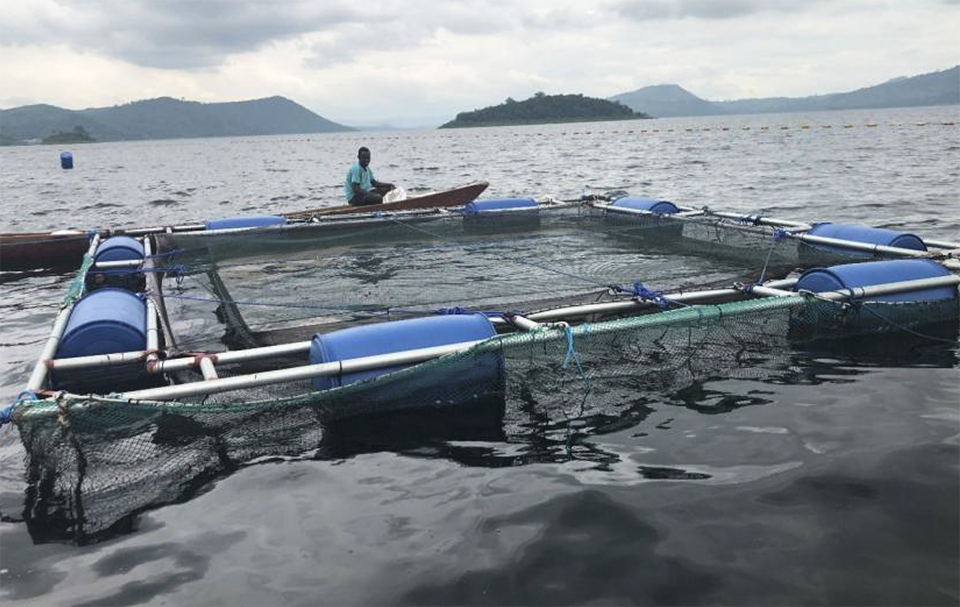
Responsibility
USSEC: Aquaculture ‘showing some life’ in sub-Saharan Africa
The U.S. Soybean Export Council explores export opportunities in sub-Saharan Africa, finding the region holds “much potential” for aquaculture growth.
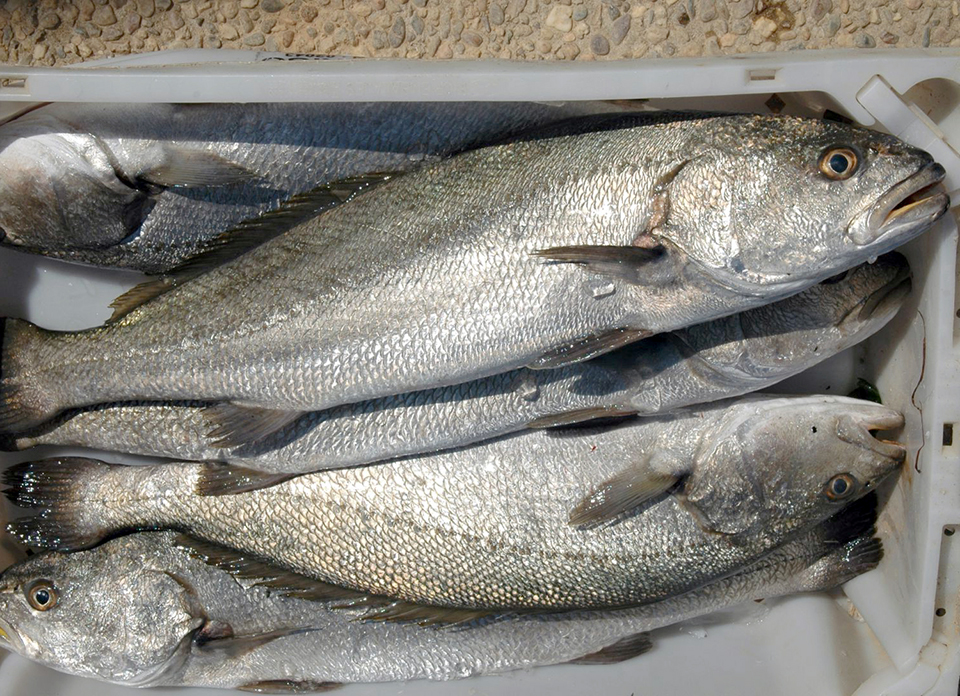
Health & Welfare
Portuguese research studies meagre production in earthen ponds
The meagre is a fast-growing fish species with good feed conversion that is a candidate for expanded aquaculture in the Mediterranean. The challenges of a lengthy adaption to captivity and susceptibility to external parasites are being addressed, and wild-caught broodstock now spawn regularly.



